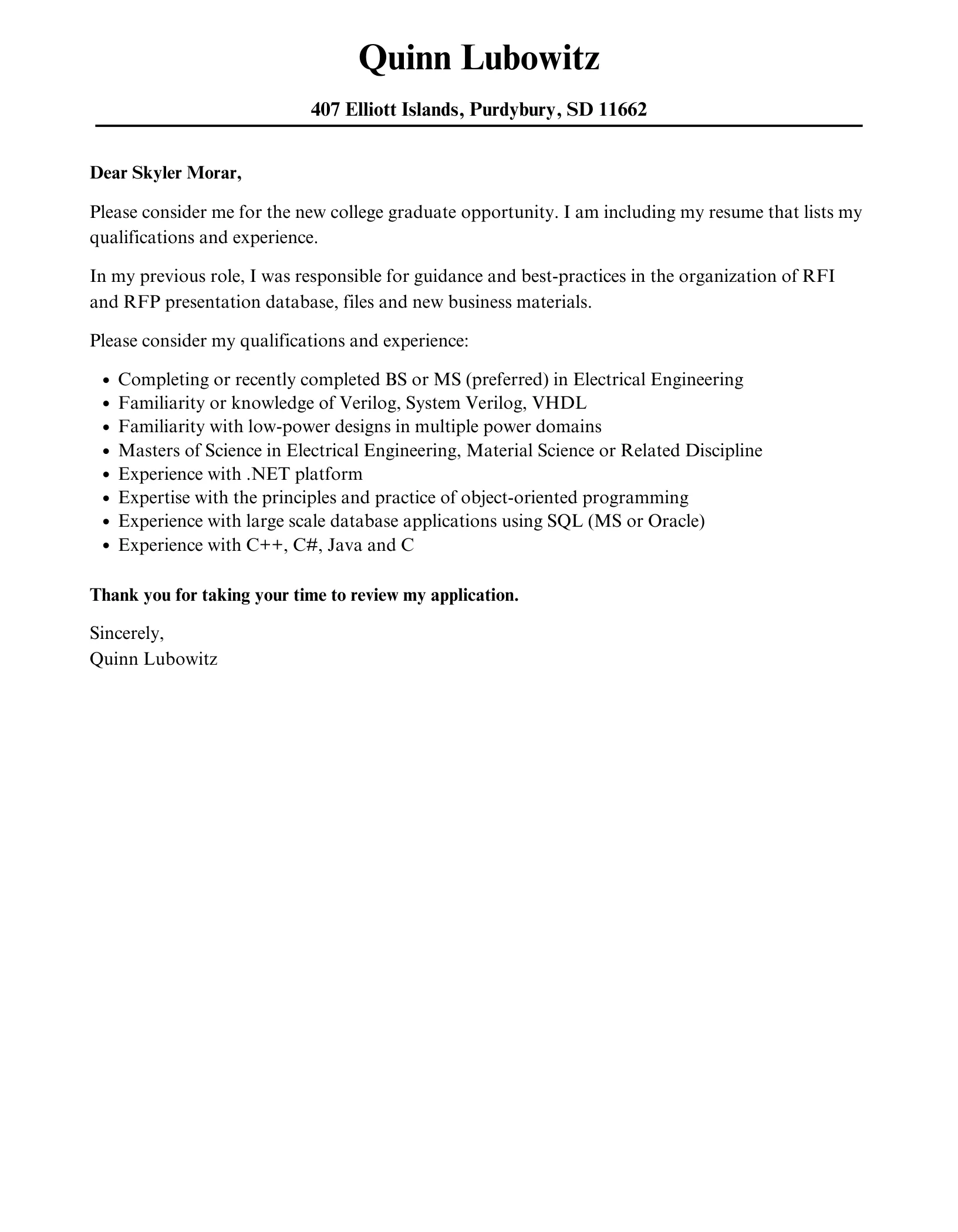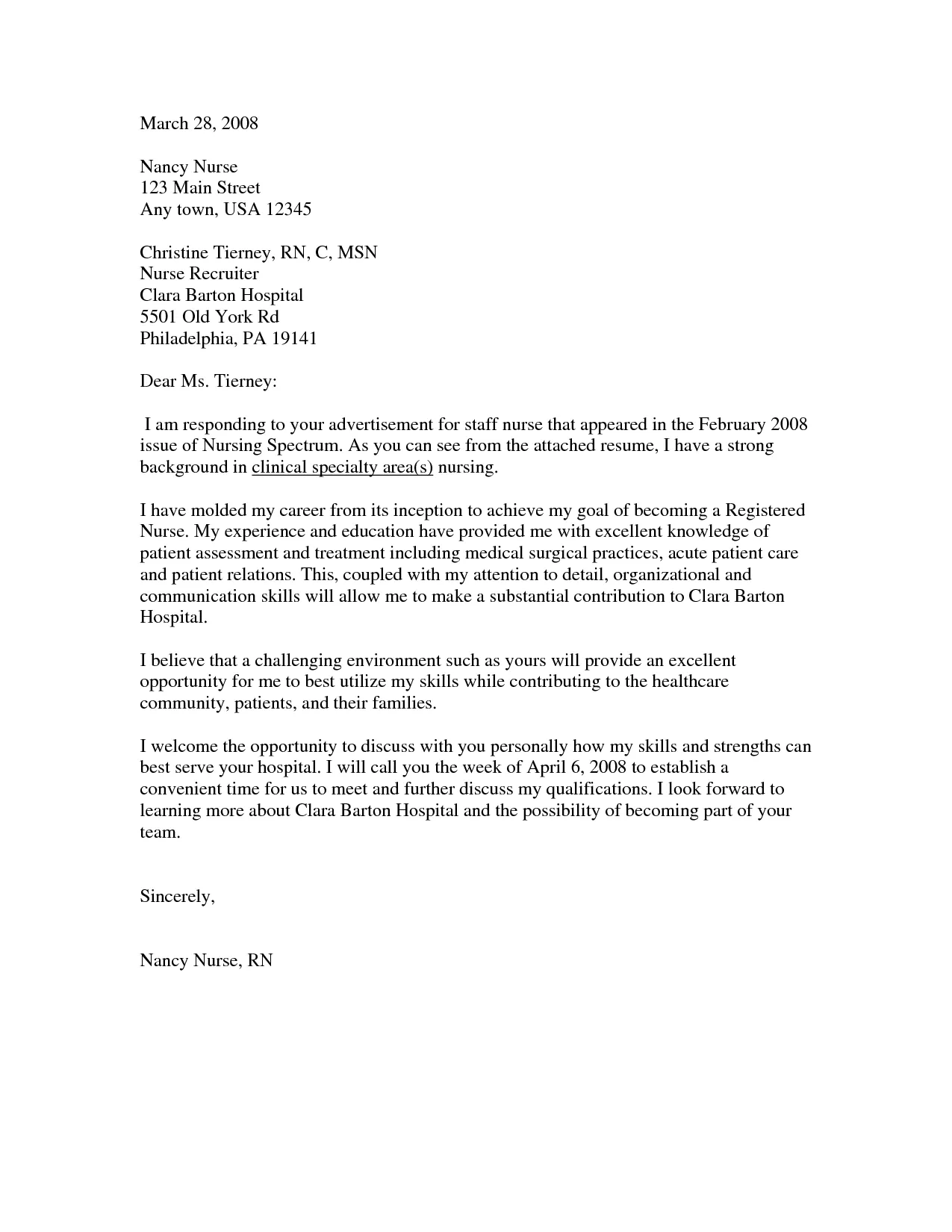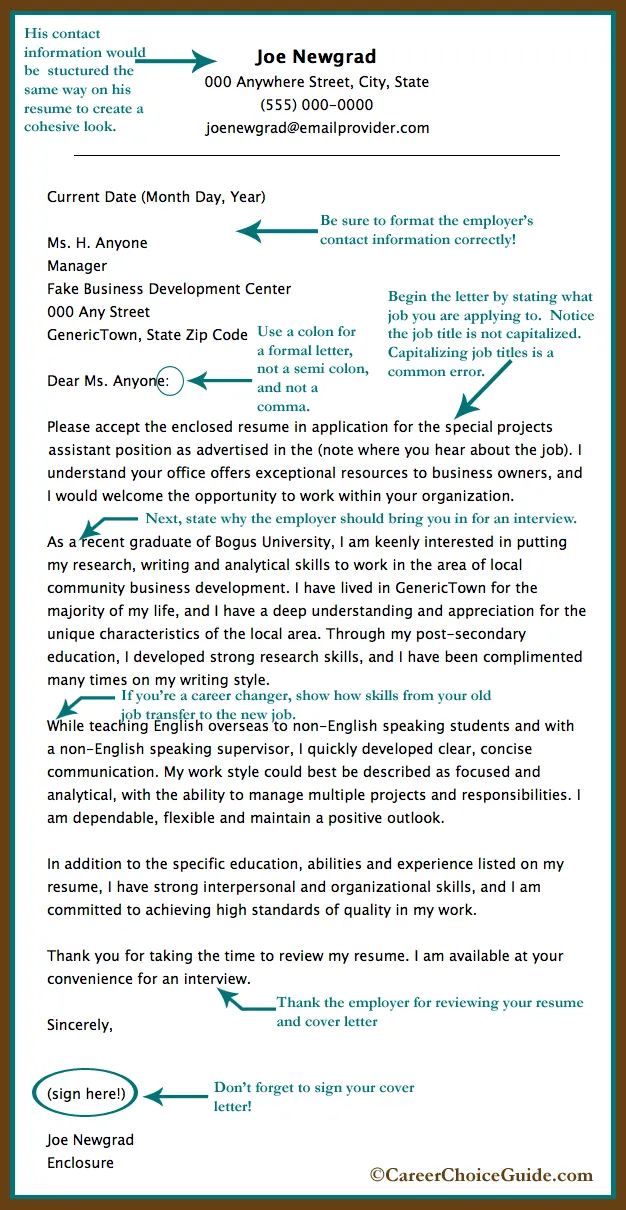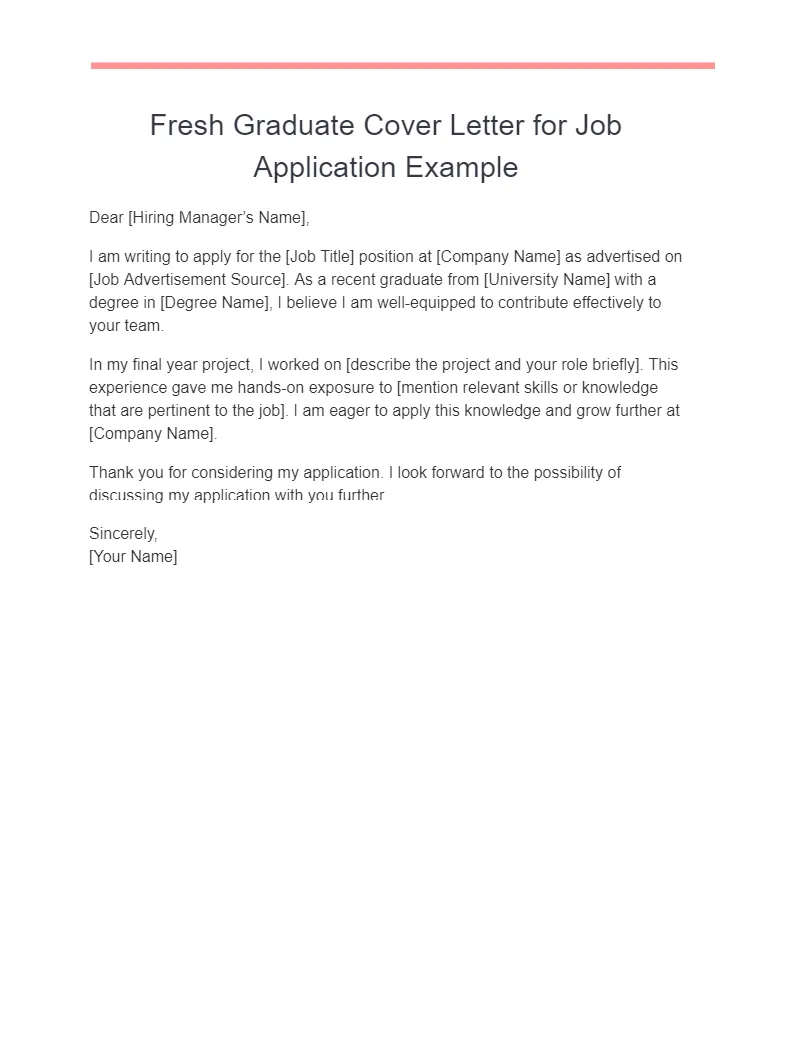Understanding the Purpose of a Cover Letter
A cover letter is your first introduction to a potential employer, and it serves as a crucial tool in your job application. Unlike a resume, which provides a factual overview of your experience, a cover letter allows you to express your personality, demonstrate your interest in the specific role and company, and connect your skills to the job requirements. Think of it as a chance to tell your story and explain why you are the perfect fit, especially as a new graduate with limited professional experience. A well-written cover letter can significantly increase your chances of landing an interview by showcasing your enthusiasm and providing context to your resume.
Highlighting Your Skills and Abilities
As a new graduate, you may not have extensive work experience, but you certainly possess valuable skills and abilities. Focus on what you can do, emphasizing both hard and soft skills. Hard skills are technical abilities, like programming languages, data analysis, or specific software proficiency. Soft skills are interpersonal attributes, like communication, teamwork, problem-solving, and leadership. Identify the skills that align with the job description and provide concrete examples of how you have used them in your academic projects, extracurricular activities, or volunteer work. This helps bridge the gap between your education and the requirements of the job.
Identifying Transferable Skills

Transferable skills are those skills you’ve developed in one situation that can be applied to another. For example, if you were a leader in a student organization, highlight skills like communication, delegation, and conflict resolution. If you excelled in group projects, emphasize your teamwork, problem-solving, and ability to meet deadlines. Think about your academic experiences. Did you conduct research? That demonstrates analytical and research skills. Did you give presentations? That showcases communication and public speaking skills. By identifying and emphasizing these transferable skills, you prove your potential and adaptability to the employer, even with little direct work experience.
Showcasing Relevant Projects and Experiences
Even without a long work history, you likely have projects, internships, or volunteer experiences that are relevant to the job you are applying for. Describe these experiences in detail, explaining your role, responsibilities, and the results you achieved. Quantify your accomplishments whenever possible. For instance, instead of saying, “Managed social media accounts,” you could say, “Increased social media engagement by 30% by implementing a new content strategy.” This makes your achievements more impactful. Highlight any skills you developed or used during these experiences that are valuable to the employer.
Formatting Your Cover Letter Effectively
The appearance of your cover letter is as important as its content. A well-formatted letter is easy to read and reflects professionalism. Use a clear and readable font, such as Times New Roman, Arial, or Calibri, with a font size between 10 and 12 points. Keep the layout clean and organized, with consistent spacing and margins. Use short paragraphs to break up the text and make it more appealing to the reader. Make sure there are no grammatical errors or typos. Ensure your contact information, including your name, phone number, email address, and optionally your LinkedIn profile URL, is clearly displayed at the top. A clean and professional format makes a positive first impression and enhances the readability of your letter.
Choosing the Right Font and Layout

Choosing the correct font and layout is a simple way to make your cover letter more readable. Avoid overly stylized or decorative fonts that can be difficult to read. Stick to classic, professional fonts. The layout should be easy on the eyes, with clear headings, adequate white space, and justified paragraphs. Align your text to the left, as it’s generally easier to read than centered or justified text. Use bullet points to highlight key information and make your letter more visually appealing. Consistent formatting creates a polished and professional look that shows you pay attention to detail.
Structuring Your Letter for Maximum Impact
A well-structured cover letter follows a logical flow. Begin with a professional salutation, addressing the hiring manager by name if possible. In the opening paragraph, state the position you’re applying for and briefly mention where you saw the job posting. The body paragraphs are where you highlight your skills, experiences, and qualifications. In the closing paragraph, reiterate your interest in the position, express your eagerness to discuss your qualifications further, and thank the reader for their time and consideration. End with a professional closing, such as “Sincerely” or “Best regards”, followed by your full name. Each section should serve a clear purpose and contribute to the overall message.
Tailoring Your Cover Letter to the Job
Generic cover letters are easily spotted and often discarded. Tailor your cover letter to each specific job application. Avoid using a template without making significant changes to fit the specific job requirements. Demonstrate that you have read the job description carefully and understand the needs of the employer. Highlight the skills, experiences, and qualifications that align with the job requirements. Use keywords from the job description throughout your letter. This demonstrates that you are a strong fit for the role and that you have taken the time to understand what the employer is looking for. Customization is key to making a lasting impression.
Researching the Company and Role

Before writing your cover letter, research the company and the role thoroughly. Visit the company’s website, read their “About Us” section, and browse their social media channels. Understand their mission, values, and recent achievements. This will enable you to demonstrate your genuine interest in the company and show how your skills and goals align with theirs. Research the specific role as well. Understand the responsibilities, the required skills, and the company culture. Use this information to tailor your cover letter and show that you understand the requirements of the job and the expectations of the company.
Using Keywords from the Job Description
Pay close attention to the job description and identify the keywords used to describe the desired skills, qualifications, and responsibilities. Integrate these keywords naturally into your cover letter. This not only demonstrates that you meet the job requirements, but it also helps your application pass through Applicant Tracking Systems (ATS), which often scan for keywords. However, don’t simply stuff keywords into your letter. Use them strategically and in context to make your letter relevant and engaging. This will improve your chances of getting your cover letter read by a human recruiter or hiring manager.
Proofreading and Editing Your Cover Letter
Proofreading and editing are essential steps in the cover letter writing process. Even the most well-written cover letter can be undermined by grammatical errors, typos, or awkward phrasing. Carefully proofread your cover letter for any errors in grammar, spelling, punctuation, and sentence structure. Read your letter aloud to catch any awkward phrasing or sentences that don’t flow smoothly. Use a grammar and spell-checking tool, but don’t rely on it completely. Have someone else read your cover letter for feedback. A fresh pair of eyes can often spot errors that you may have missed.
Common Mistakes to Avoid

Several common mistakes can undermine your cover letter. Avoid generic or vague statements that don’t demonstrate your skills or suitability for the job. Don’t repeat your resume word-for-word. The cover letter is a chance to expand on your resume. Avoid typos and grammatical errors, which can create a negative impression. Don’t be overly formal or informal. Strive for a professional yet engaging tone. Don’t focus solely on what you want; emphasize what you can offer the employer. Don’t include irrelevant information or personal details that are not appropriate for a professional context. Remember, the cover letter is your chance to shine, so make sure you’re putting your best foot forward and avoid making the same mistakes as other candidates.
Seeking Feedback from Others
Before submitting your cover letter, ask for feedback from trusted sources. Share your cover letter with career counselors, professors, mentors, or friends who have experience in job applications. They can provide valuable insights on your content, formatting, and overall presentation. They can also help you identify areas for improvement. Be open to constructive criticism and use their feedback to refine your cover letter. Seeking feedback is a sign of professionalism and a commitment to creating the best possible application. Getting another perspective can make a substantial difference in your job search.
